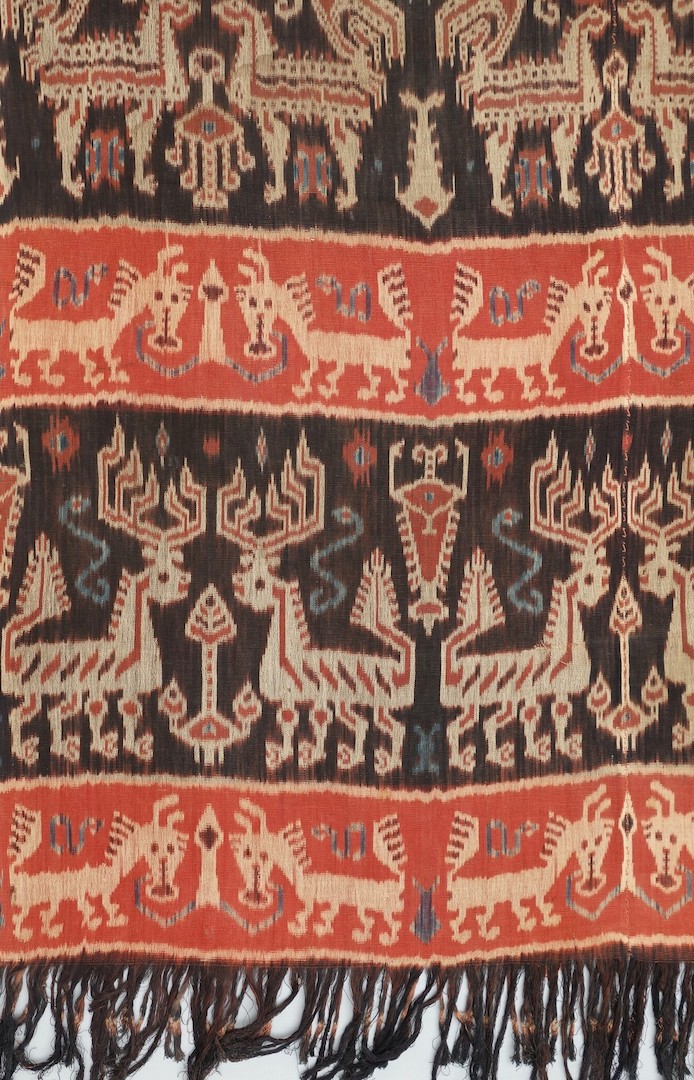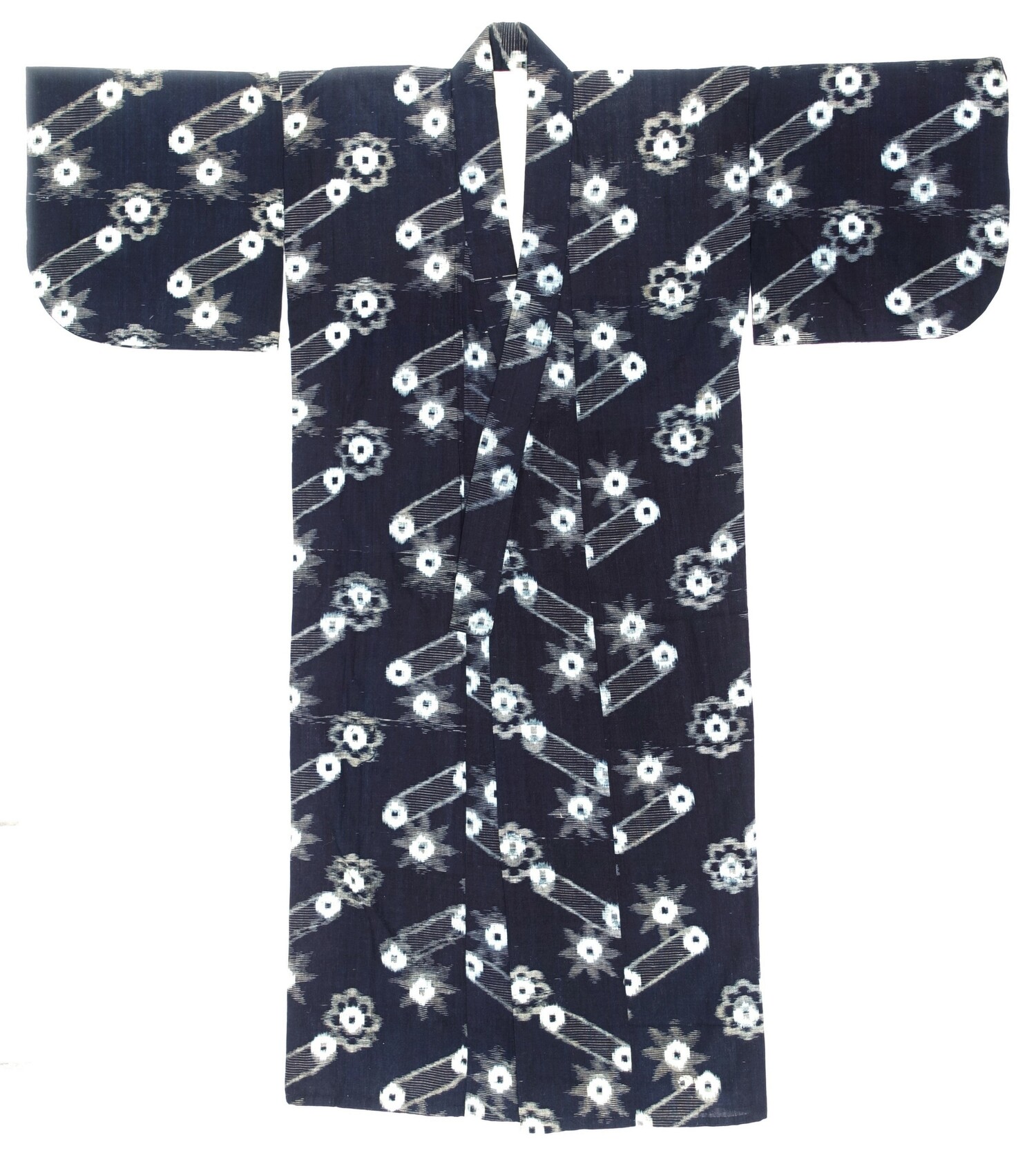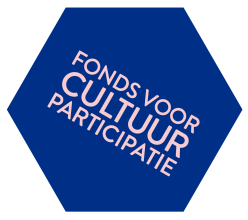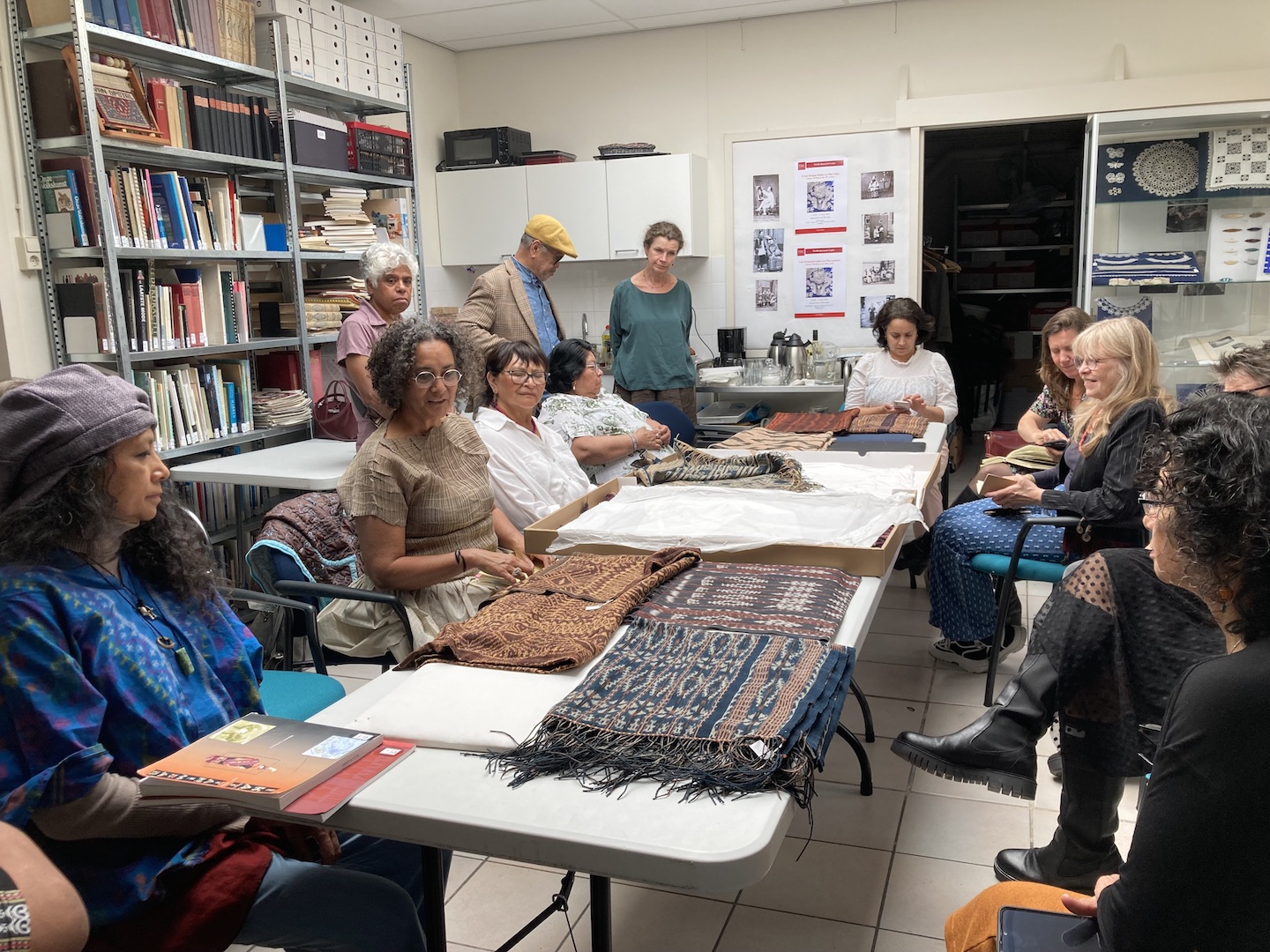
Part and parcel of the TRC are the absorption and dissemination of knowledge about textiles and dress, and especially about items that are already in the TRC’s large and diverse collection.
This is done by studying specific aspects and publishing about them (such as via the Bloomsbury embroidery encyclopedia series), or by focussing on parts of the collection and expanding the information provided in the online catalogue (such as by TRC’s intern student Olivia Buchan’s study of the lace collection).
We also invite groups of people to come and talk in an informal setting about specific forms of textiles and dress. This is the series of meetings: Let's talk about ... , for which people with specific interests, from different communities or with various ethnic roots are invited to the TRC to see and talk about groups of objects from the collection.
A significant aspect of these group visits is to make items from the TRC Collection available for discussion purposes. We want to learn, and record information for the future.

Over the last year or so, there have been a Romanian embroidered blouses day, a Moroccan henna afternoon, a group visit of embroiderers from different countries organised by Museum De Lakenhal here in Leiden, not to mention the regular visits of a group of bobbin lace makers who help further identify and describe our collection of bobbin lace and equipment.
And just a few days ago, an ikat afternoon was held at the TRC with a group of ikat weavers and wearers, whose ancestors originate from various parts of the world, including Indonesia.
 Ikat cloth from Guatemala, late 20th century (TRC 2022.2301).
Ikat cloth from Guatemala, late 20th century (TRC 2022.2301).
The group visit was organised by Maria Linkogle (TRC) and Loes Leatemia of the Weefstudio Leatemia, and was set up with the theme ‘Generations and cultures linked via ikat’, with financial support from the national Cultural Participation Fund.
 During the ikat afternoon, examples of ikat from around the world were brought out, including items from the Ivory Coast (participants had not realized this technique can also be found in parts of Africa), Guatemala, Ecuador, Uzbekistan, India, Japan, three different styles of ikat from the Philippines (including dream weaver forms worked in banana fibres), as well as, of course, examples from Indonesia.
During the ikat afternoon, examples of ikat from around the world were brought out, including items from the Ivory Coast (participants had not realized this technique can also be found in parts of Africa), Guatemala, Ecuador, Uzbekistan, India, Japan, three different styles of ikat from the Philippines (including dream weaver forms worked in banana fibres), as well as, of course, examples from Indonesia.
The actual textiles were put on two long tables with people seated around them in order to discuss how these pieces were made and what they meant. The conversation ranged from technique (especially dyeing and weaving), to motifs, changes in meaning, and how the textiles and their significance vary from one group to another. There were also comments on the difference between old (pre-colonial) and modern forms.
 Dr Gillian Vogelsang-Eastwood explaining the role of he TRC at the study day on ikat, Friday 7 June 2024.One of the things that struck me during the ikat group visit was the bitterness in which some people spoke about not being allowed to even see items from their own cultures, that are now in museums here in the Netherlands or elsewhere in Europe and beyond.
Dr Gillian Vogelsang-Eastwood explaining the role of he TRC at the study day on ikat, Friday 7 June 2024.One of the things that struck me during the ikat group visit was the bitterness in which some people spoke about not being allowed to even see items from their own cultures, that are now in museums here in the Netherlands or elsewhere in Europe and beyond.
They do not necessarily want the items to be returned to the country where these objects were manufactured. Because of globalisation and the diaspora of many ethnic and cultural groups, they simply want to be able to see, feel, and admire the products that were once made in the country where they or their ancestors came from. Also, often people cannot afford to ‘return’ to the land of origin just in order to see a piece of cloth, or indeed for political or religious reasons they are not in a position to go to the place where an object was made. What they want, very simply, is for museums and other institutes to open their doors and depots and let them see these products more easily.
The TRC’s policy of allowing individuals and groups with serious requests to see items and in some cases to handle textiles is a compromise that is seen as a win-win, because the TRC can learn much by listening to the discussions that occur, filled with stories about what these pieces mean, not just technically, visually, but also socially and culturally. On the other hand, people feel that they are listened to and that the products once produced in their 'homeland' are treated with respect.
One of the visitors at the ikat afternoon brought an ikat sarong with him, made in a Moluccan village, that had been in his family for many years. He had been thinking of making a jacket from it, but decided to give the cloth to the TRC, as he felt it was a home where the cloth and its makers would be respected. More about this piece will shortly appear in a TRC blog.
 TRC study day on ikat, Friday 7 June 2024.
TRC study day on ikat, Friday 7 June 2024.
More of these thematic days and group visits to the TRC are being planned for the next twelve months. Further suggestions are most welcome, but please note they should be based around items in the TRC Collection (consult the online catalogue!)










